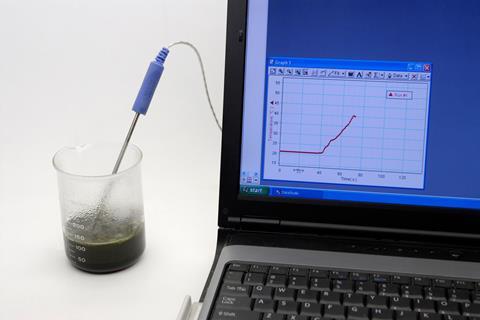Use these strategies to help your students get to grips with this fundamental post-16 topic
Gibbs free energy is a fundamental post-16 topic students need to master to become successful chemists. It’s often taught as part of thermodynamics, but can be somewhat isolated as a topic. This is understandable, given that in most exams it tends to be assessed in isolation. However, you can help your students by connecting Gibbs free energy and students’ prior knowledge of enthalpy. Linking between existing and new knowledge not only supports learning but, in this case, it also helps transition students from a superficial understanding of thermodynamics to a deeper appreciation of why reactions happen.

By the time students learn about Gibbs free energy, they’ve been exposed to a considerable number of exothermic and endothermic reactions. They’ve seen these reactions first-hand and can explain their existence in terms of the energy required to break bonds versus the energy released when new bonds are made. They therefore accept that both types of reaction should happen.
Linking enthalpy to entropy
When delivering this topic, I like to start by challenging this tacit acceptance. By demonstrating an endothermic reaction and discussing how things normally react exothermically, I challenge students to consider if endothermic reactions should be possible. From here, I begin to examine states of matter in terms of their disorder and introduce the term entropy.
Once students have an awareness of entropy, use examples to illustrate its key features. By using the entropy data of water in its three states, you can show learners that entropy is greater in gases than in liquids. Compare liquid water (70 J mol–1 K–1) with solid sodium chloride (72 J mol–1 K–1), to illustrate that this rule is only true when comparing the same substance. After checking students’ understanding of these ideas, you can then build on them. Link boiling and melting points to entropy changes by drawing a heating curve and an entropy curve next to each other so students can see their similarities and differences.
Understanding entropy
Now students are ready to calculate entropy. After going through an example and then working together on a second one, get your students to do extended practice of calculating entropy changes. The students now have the basic prior knowledge, so you can introduce the Gibbs free energy equation. Define feasible, and pitch this by explaining that they now know that three things determine whether a reaction is feasible or not:
1. Reactions that are exothermic are likely to happen.
2. Temperature plays a role in whether a reaction happens or not.
3. If entropy increases, that will help a reaction take place.
Then write out the formula out and define each component, ensuring students are aware that a number less than zero is feasible. Ask students to consider what value will come from the following scenarios:
| Reaction | Enthalpy | Temperature | Entropy | What value of ΔG will we get? |
|---|---|---|---|---|
|
1 |
Exothermic |
High |
Positive |
Negative |
|
2 |
Endothermic |
High |
Positive |
Negative (if the temperature or entropy is high enough) |
|
3 |
Exothermic |
Low |
Negative |
Negative |
|
4 |
Endothermic |
Low |
Negative |
Positive |
When going through these examples, it’s important to keep linking to the value of –TΔS.
Moving on to calculations
Now the students have a conceptual understanding of how the values are linked, they can move on to worked examples. I find it useful to think aloud and show students how to calculate ΔG by completing one live under a visualiser or on the board.
Students need to extensively practise problems showing a range of values and outcomes of ΔG so they can accurately identify feasible reactions. Get them to repeat this process, but this time determining the temperature at which the reaction is feasible.
Gibbs free energy gives learners a better understanding of why some reactions happen and others don’t. By explicitly linking it to their prior understanding and building this knowledge step by step, you will help your students achieve success in this topic.
Adam Robbins














No comments yet